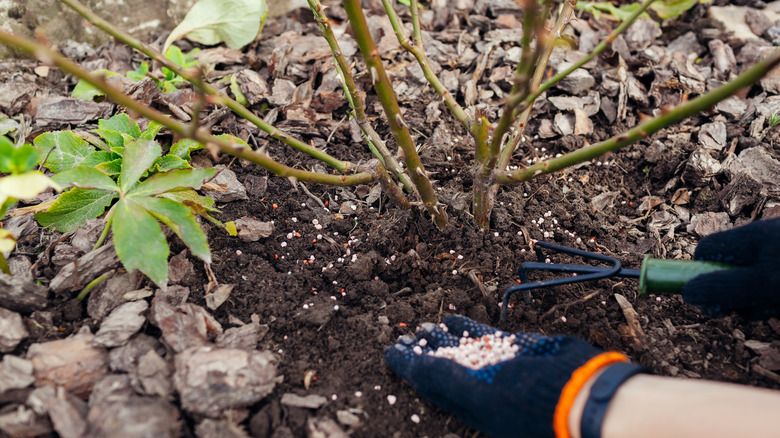How To Revive The Wilted Roses In Your Garden
There's something splendid about the delicacy of the rose, each petal folding into itself to create the perfect bloom. As mesmerizing as they are, roses require significant attention to thrive. When you see wilted blooms, leaves, and stems in your garden, the plant is screaming for help. You can revive wilted roses by providing them with what they need, which is often water or improved access to nutrients. Don't overdo it, since too much of a good thing can also be a problem.
However, if you know they've been well-watered, the underlying cause could be root rot. This condition occurs when the rose is exposed to too much water, which can increase the number of bacteria present, overpowering the rose root.
Another cause could be transplant shock, which can be the culprit if you've just planted rose bushes or moved them from one area to the next. In this case, you may need to adjust the nutrients present to better support the needs of roses. The key to reviving your blooms is to take action to correct the underlying problem.
Watering your wilted roses
A lack of enough water is a common cause of droopy, shriveled roses in a garden. Press your fingers 2-3 inches into the soil at the base of the plant to determine if this is the underlying problem. Is it dry and dusty? That's likely the problem. If you can push your fingers into the soil easily and it's moist throughout, that's a good sign. The consistency of the soil matters, too. Soil with a lot of sand in it will dry out faster, meaning you'll need to water more frequently than thicker, mulch-based soil that retains moisture well.
If your roses have been there for some time, aim to water them once or twice a week. The goal is to keep the soil around the root moist but not saturated with water. If there's proper drainage present, the water should seep into the soil and spread out. If it sits and doesn't penetrate, that's overwatering. Also, note that some varieties of roses need more or less watering than others. Some are more drought-tolerant than others, such as China roses, Knock Out varieties, and Rugosas, which require far less watering than most.
Other concerns that lead to wilted roses
Watering may be the culprit, but if you don't believe that's the case, consider the soil quality. A soil test can give you a better idea of the level of nutrients present. In some cases, you can tell there's a need for a nutrient supplement based on what's happening with the rose. For example, if the top portions of your roses are wilting, that's an indication the soil is lacking calcium. You'll also notice the foliage beginning to dry out and brown. A good way to get calcium is through the addition of a rose-based plant food or bone meal, commonly found in the garden center.
Stress from temperature changes can also cause rose wilting. Roses tend to do well in temperatures around 60 to 75 degrees and a slightly lower temperature in the evenings. Significant shifts outside of this range can stress the blooms, leading to damage. Often, these roses are also more likely to stop blooming because of high heat. Your roses need sunlight, but you may be able to reduce the amount of direct sunlight they get in extreme temperature changes by placing a shade over them, such as a canopy. It's also a good idea to increase watering when temperatures are very high, too.


